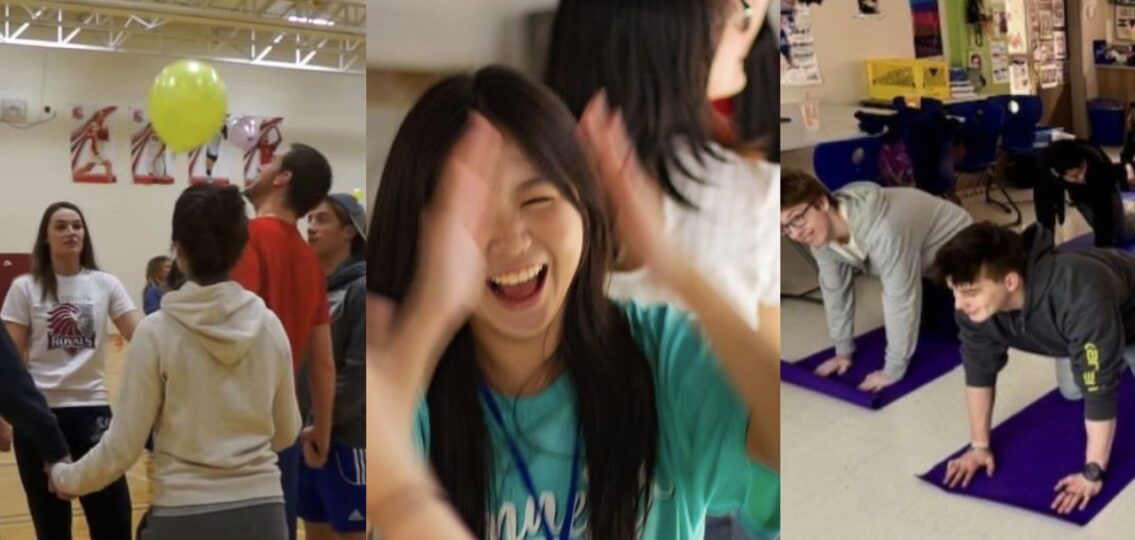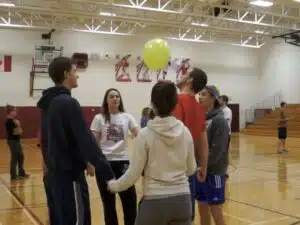Teachers know that even the most focused students need a pause from learning now and then. Enter: brain break games. Whether your class is getting squirmy during a long math block or needs a mid-morning energy boost, these easy-to-implement games offer the perfect solution.
What Are Brain Break Games?
Brain break games are short activities used to give students a mental rest from academic tasks. They usually last 2–5 minutes and can include movement, laughter, creativity, or mindfulness. They are often used between lessons, during transitions, or anytime students seem restless or fatigued. Brain breaks help shift energy, refocus attention, and make classroom learning more sustainable.
What are the Benefits of Brain Breaks in the Classroom?
Implementing brain break games regularly has proven cognitive and emotional benefits for students. They improve focus – short resets can boost concentration and task persistence, allowing students to return to work more energized and motivated. This increased engagement in turn leads to better classroom behavior and reductions in disruptive behavior. Brain break games that promote movement and fun also lead to enhanced emotional regulation while games that encourage teamwork and laughter lead to a stronger classroom community and sense of bonding among students.
Incorporating brain break games into your classroom routine doesn’t take much time, but it pays off in major ways. These short mental resets help students re-engage with learning, manage their emotions, and enjoy being part of the class community. Whether you use them as a transition tool or a behavior management strategy, these activities can bring energy and joy into the school day.
Classroom Brain Break Games and Activities
1. Freeze Dance
Freeze Dance is a fun and energizing brain break that helps students reset and refocus. It works by playing music and letting students dance around however they like. After a few seconds, pause the music suddenly. As soon as the music stops, everyone must freeze in place and anyone who moves is out. Then play the next round until you have a winner!
2. Dance Like A…
This is a silly and creative brain break that gets students moving and laughing. Call out fun prompts like “dance like a robot” or “move like spaghetti noodles.” Let students act it out for a few moments before switching.
3. Balloon Keep-Up
source: YouTube
Nothing grabs attention like a floating balloon. Toss one (or more) into the air and challenge students to keep it from hitting the floor using only heads, elbows, or hands. Keep score with a class record for the longest time.
4. Alphabet Stretch
Alphabet stretch is a fun brain break game that gets student’s bodies moving while also pushing their creativity. It starts with the teacher calling out a letter, and then the students must move their bodies into a position that resembles that letter. For example, students might put their arms straight out to make a “T” shape. More complex letters can be tackled in pairs or trios.
5. Yoga Freeze
source: instagram
Yoga Freeze is similar to Freeze Dance, but with yoga poses instead of dancing. Balance, calm, and body control come together in this challenge. You start by selecting a yoga pose for the students and then yell “freeze” and see which students can maintain the yoga position the longest.
6. Human Clock
Human Clock is a fun and active way to help students practice telling time. To play, simply call out a time like “2:45” or “6:00” and have everyone use their arms to show that time. One arm is the hour hand, and the other is the minute hand. Give them a few seconds to think it through and strike their pose. You can check together as a class to see who got it right.
7. Air Writing
Air Writing is a great brain break game because it helps students build fine motor skills and practice what they’ve learned. To play, ask students to “write” letters, numbers, or short words in the air using their finger or hand. You can call out what they should write, or let them choose. To make it more interactive, have students face a partner and take turns guessing what their classmate is drawing in the air.
Brain Break Games that Encourage Focus
8. Count to 10
Sometimes the most simple games can be the best. Playing count to 10 requires patience and coordination. Students attempt to count aloud from 1 to 10, one number per person. If two people speak at the same time, the group starts over. If you need to add complexity, you can increase the number, or have them only do odd or even numbers.
9. 5-4-3-2-1 Grounding
Grounding exercises like this one guide students back to the present. Ask students to identify 5 things they see, 4 they hear, 3 they can touch, 2 they smell, and 1 they taste – or wish they could.
10. Opposite Instructions
Mix up the routine with a command game that tests listening skills. Instruct students to do the opposite of what you say. For example, say “sit” to direct students to stand. Get faster and see who can keep up.
11. Syllable Clap
Syllable Clap is a quick and fun brain break that mixes language skills with rhythm. To play, say a word out loud like “banana” or “elephant” and have students clap once for each syllable. So for “banana,” they would clap three times: ba-na-na. You can keep going with new words, or invite students to come up with their own.
12. Reverse Freeze
Give the classic freeze dance game a surprising twist. When music plays, students freeze. When it stops, they move around. Short rounds keep it engaging. You can even play it back to back with the original freeze dance game!
13. Silent Ball
This calm, focused activity encourages self-regulation and teamwork. In a silent circle, students toss a soft ball to each other without speaking. Anyone who talks or drops the ball is out.
Brain Break Games for Creative Thinking
14. Would You Rather Walk
Stimulate movement and spark conversation at the same time. Ask a “Would you rather” question, and have students walk to different parts of the room based on their answers. Encourage brief partner discussions.
15. Mirror Movement
Mirror Movement is a great brain break activity that helps students build focus and connection with a partner. To play, have students pair up and choose who will be the leader first. The leader starts making slow, simple movements like raising an arm or turning their head while the partner tries to mirror those movements as closely as possible, just like a reflection. After about 30 seconds, they switch roles so everyone gets a turn being the leader.
16. Popcorn Storytelling
Creativity takes the spotlight in this collaborative storytelling challenge. Begin with one sentence, then “popcorn” to different students to continue the tale, one line at a time. You can also use a soft ball, so that the students toss it to each other when they “popcorn” to a different student.
17. Quick Draw Challenge
Let artistic energy flow with this rapid-fire drawing task. Call out a silly prompt and give students 60 seconds to sketch it out on a whiteboard or paper. Keep it simple with drawing ideas such as animals or fruits. Since time is limited, students need to focus on speed while also maintaining artistic creativity.
18. Animal Charades
Animal Charades is a fun and lively brain break that lets students get creative and move around. To play, one student comes to the front of the class and silently acts out an animal using only gestures. The rest of the class watches and tries to guess what animal is being acted out. Once someone guesses correctly, choose a new student to take a turn.
19. Fast Facts
This game reinforces trivia knowledge with speed and teamwork. Choose a category and toss a ball to a student, who must name something from that category before passing it on. The category can be a topic that your class recently covered, like country capitals, or types of rocks.
20. Thumb War Tournament
Encourage students to join in a quick competition that’s equal parts fun and friendly. Students pair off for thumb wars, with winners moving on to new partners in a mini-tournament. You could also have a rock paper scissors tournament as a less aggressive alternative.
Choosing a Brain Break Activity for Your Classroom
With so many options for brain break games and activities, it can be difficult to choose the right one for the moment. One thing to take into consideration is the age of the students in the grade you teach. Some of the brain break games are simply fun and relaxing games, while others are fun and educational. Think about the age of your students and what would benefit them the most. If your students are on the younger side, they might enjoy the sillier games like freeze dance. If your students are close to graduation age in high school, they might prefer a critical thinking game like clock arms.
Another thing to take into consideration is the time of day, and the subject being taught. For example, if you’re teaching grammar and spelling, it might be difficult mentally transitioning into a counting game. Alternatively, if the students are just coming back from gym class, they might not need a physical brain break game since they recently moved their body.
Conclusion
Brain break games are fun, but they also help students recharge, refocus, and stay engaged throughout the day. Taking short breaks to move, laugh, or think in a different way can boost energy levels, improve focus, and support better learning. Over time, students will look forward to their brain break and their participations will improve. Whether it’s dancing, acting, or solving quick challenges, brain breaks are a powerful way to make learning more enjoyable and effective.


